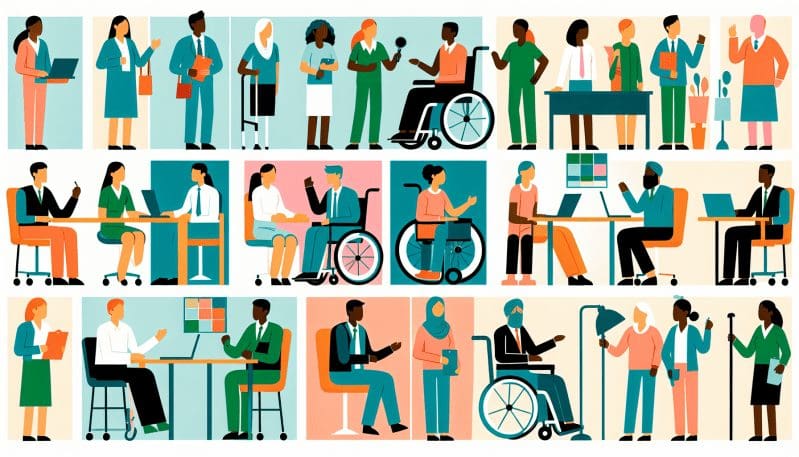Bridging the Accessibility Gap: Inclusive Job Strategies for a Diverse Workforce
- Home
- Bridging the Accessibility Gap: Inclusive Job Strategies for a Diverse Workforce
- Vishal Kumar
- April 3, 2024
- 0 Comments
In today’s rapidly changing job market, the concept of diversity and inclusivity extends far beyond race and gender; it also encompasses the varied abilities of each individual. ‘No Worker Left Behind’ champions the cause for an accessible workplace, where workers with disabilities are not just accommodated but are integral to the fabric of a company’s culture and success.
Reflecting on the current state of job accessibility, we see a landscape that is far from level. People with disabilities face numerous barriers to employment, from biases and misconceptions to physical workplace obstacles. However, there is a growing recognition that inclusivity is not just a matter of compliance with the Americans with Disabilities Act—it is a competitive advantage.
Businesses adopting inclusive hiring practices are finding that a workforce rich in diversity is rich in innovation as well. Different experiences and perspectives drive creativity, leading to breakthrough ideas and solutions. Employees with disabilities bring unique insights that can result in product enhancements, improved customer service, and more effective workplace strategies.
Consider the success story of Microsoft, which launched its Autism Hiring Program to provide career opportunities for individuals on the autism spectrum. This initiative not only created meaningful work for a segment of the population that is often underemployed but also brought fresh perspectives into Microsoft’s teams, driving diversity of thought and fostering innovation within the company.
Yet, while there are shining examples of success, the obstacles persist. Workers with disabilities still face significant challenges, from inaccessible application processes to limited career advancement opportunities. To bridge this accessibility gap, ‘No Worker Left Behind’ proposes the following strategies:
1. Implement Universal Design principles in the recruitment phase, ensuring that job postings, application portals, and interview processes are accessible to all potential candidates.
2. Provide comprehensive training for HR professionals and managers on inclusive hiring practices and disability etiquette to foster a welcoming environment from the outset.
3. Invest in assistive technologies and flexible work arrangements to accommodate the needs of employees with disabilities, promoting autonomy and productivity.
4. Establish mentorship programs that pair employees with disabilities with leaders in the company to facilitate career growth and development.
In advocating for these strategies, we challenge the status quo and encourage businesses to take a proactive approach to inclusion. The potential benefits are manifold: from tapping into a wider talent pool to enhancing company reputation, inclusive job strategies are a win-win for employers and employees alike.
Moreover, technological solutions like AI-powered accessibility tools and adaptive workplace design software can help address the practical challenges faced by workers with disabilities. Policy recommendations, such as tax incentives for companies that exceed ADA standards or grant programs for organizations that train and hire individuals with disabilities, can further move the needle towards an inclusive workforce.
In conclusion, ‘No Worker Left Behind’ believes that an inclusive workplace is not merely an ideal to aspire to; it is an achievable reality that benefits everyone. By sharing these insights and real-life examples of companies that are leading the charge, we aim to inspire change, foster dialogue, and ultimately, ensure that no worker is left behind in the evolving landscape of work.


Leave A Comment